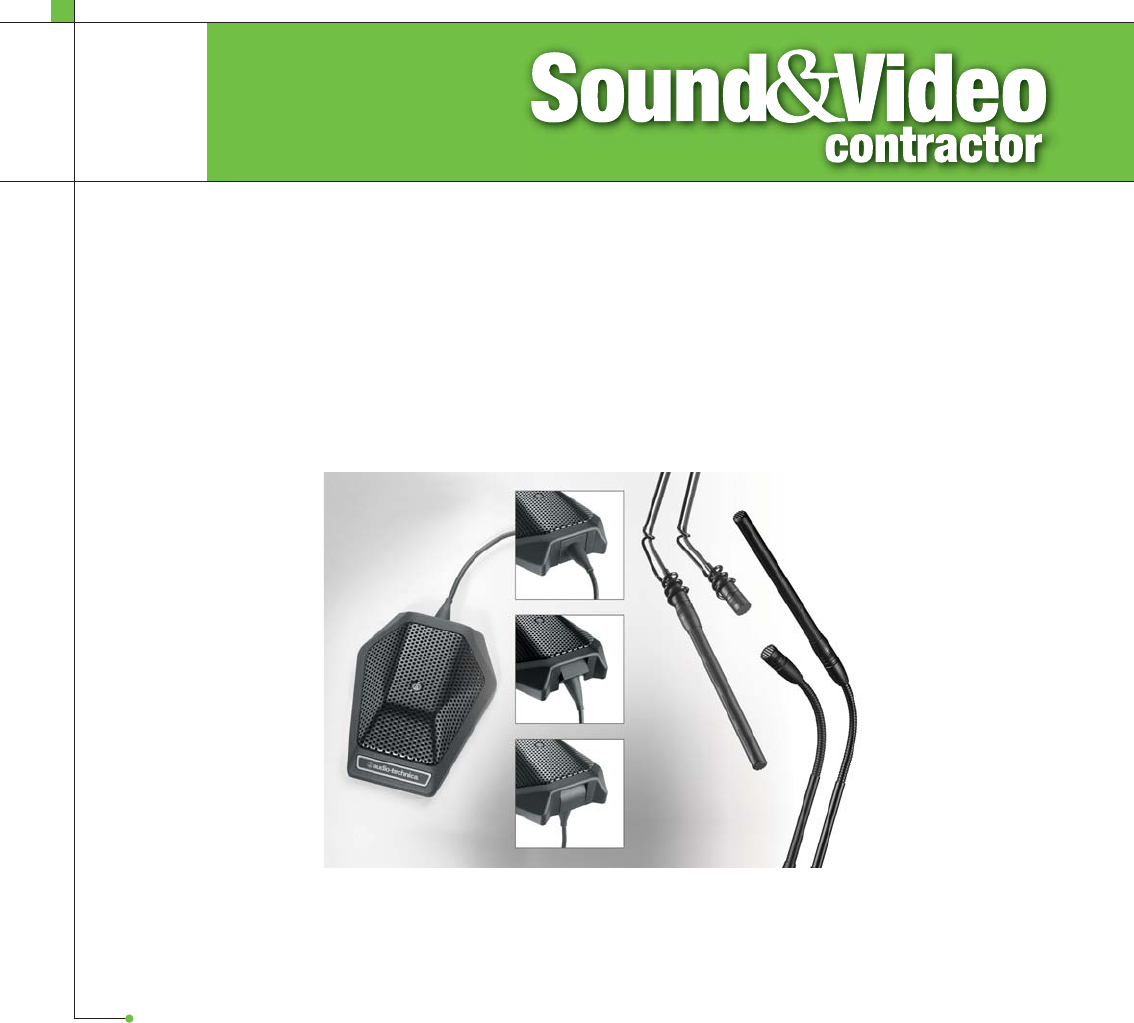
REVIEW
John McJunkin
®
New improvements to a solid and
reliable line of microphones.
When it comes to computer software, we have come to ex-
pect occasional updates. Version 1 is great, then version 2
comes out with enhancements and new features. But with
hardware, this type of update is not automatic. Sometimes
a manufacturer will introduce a “Mark II” product, but the
wholesale improvement of an entire product line is a rare
event. Audio-Technica has accomplished exactly that with
its UniPoint®line. There are fi ve primary enhancements to
the line, some more earth-shattering than others, but all
result in signifi cantly better products all around. Let’s see
what they’ve done.
The proliferation of computers, BlackBerries, cell
phones, Bluetooth, and other technology in boardrooms
and meeting spaces have given us more RF than ever be-
fore. A-T’s solution is UniGuard, a complete redesign of how
UniPoint products are shielded from RF. In my estimation,
this is among the more important improvements.
The second major enhancement is the introduction of
interchangeable elements to boost quality and help reject
feedback when it’s a problem. There are capsules for om-
nidirectional, cardioid, and hypercardioid patterns, and the
new UniLine
TM
pattern (more on that in a moment).
The third enhancement is UniSteep®, a high-quality
80Hz low-cut fi lter to reduce rumble and other low-frequency
ambience in a natural way. These are indeed effective and
steep fi lters (18dB/octave, to be exact).
The fourth innovation is UniLine, a new line-cardioid ele-
ment with a tight pattern. Think line array in a microphone.
These mini-shotguns have a super-tight pattern, which is
occasionally necessary. I love these mics!
The fi fth and fi nal enhancement is PivotPoint
TM
, a rotat-
ing connector on the line’s boundary mics, enabling simpli-
fi ed mic integration. Not only does mic integration take more
time, but if a contractor or integrator breaks open the box to
move the wiring and make an install aesthetically pleasing,
it can severely compromise the shielding. Audio-Technica’s
engineers signifi cantly improved the RF shielding of these
microphones, and PivotPoint was born to both aesthetic
and practical parents. The mic can be easily installed in
an attractive way, while avoiding the shield-compromising
problems associated with opening up the box—an enhance-
ment I found particularly clever.
John McJunkin
UniPoint L ine
Aud io-Tech n ica
®
